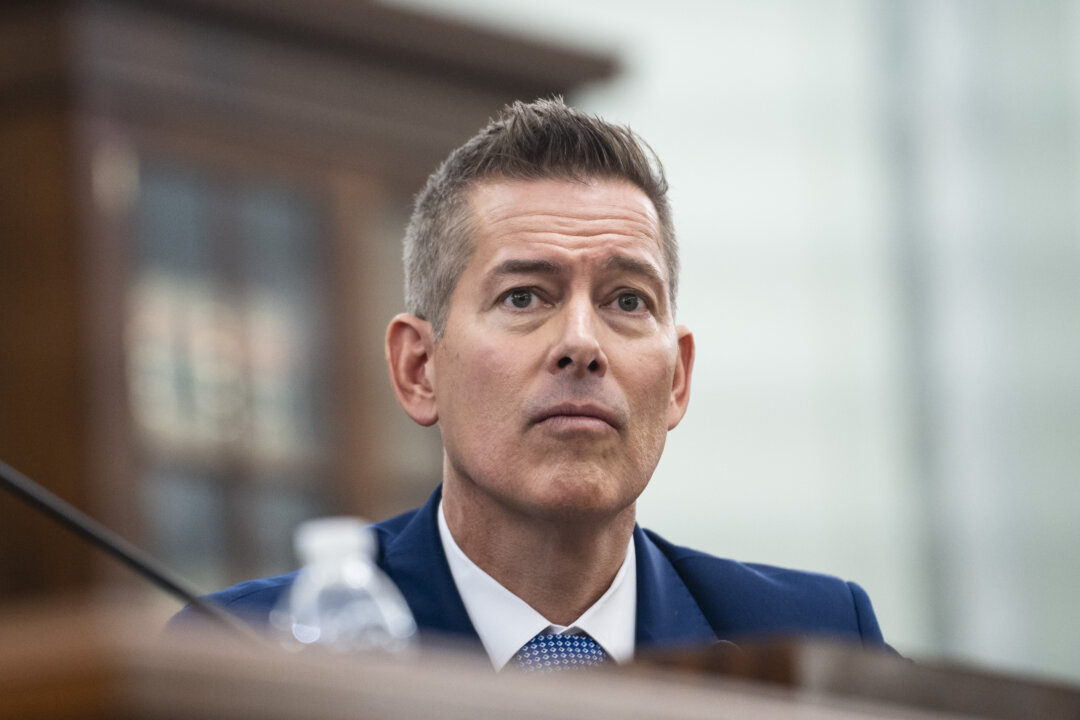‘You want the brightest protecting yourself and your family. That’s what we’re going to do with the department,’ Sean Duffy said.
Days after the deadliest U.S. aviation accident in more than two decades, Transportation Secretary Sean Duffy said on Feb. 2 that many Federal Aviation Administration (FAA) systems are outdated and need to be updated amid a lingering shortage of air traffic controllers.
Speaking with Shannon Bream of “Fox News Sunday,” Duffy said that while America’s skies are still the world’s safest, the FAA’s systems are in need of major improvements.
“We have the safest skies in the whole world. Traveling by air is the safest mode of transportation,” Duffy said. “It’s not just air traffic controllers, but we do have technologies on airplanes to keep them separated. … This is the safest system.”
Duffy said that the FAA systems “need to be upgraded” and commented on the Notice to Air Missions (NOTAM) outage that delayed hundreds of flights throughout the United States on Sunday morning. NOTAM, which Duffy called “antiquated,” is a pilot warning system that notifies of weather or airspace changes before landing.
Due to the FAA imposing a mandatory retirement age of 56 for air traffic controllers, as well as a mandatory maximum age of 31 for hiring new air traffic controllers, large turnover makes it difficult to prevent worker shortages. Duffy acknowledged that the FAA’s training academy was hampered by the COVID-19 pandemic when class sizes shrank, delaying certification of new controllers as trainees could not receive in-person experience in control towers.
Duffy said his goal is to train a new generation of recruits in air traffic control.
“You can’t focus on diversity, equity, and inclusion when you try to hire air traffic controllers, you focus on the best and brightest,” the Transportation Secretary said.
“Some people may like to have this conversation around equity, but if it’s your pilots or if it’s your air traffic controllers, you want the best. You want the brightest protecting yourself and your family. That’s what we’re going to do with the department.”
On Jan. 30, Duffy wrote a post on the social platform X vowing to reform the FAA, one day after an Army Black Hawk helicopter collided with an American Airlines flight heading into Ronald Reagan National Airport. All 67 people aboard both aircraft died in the disaster, which happened on his first day on the job.
“I am in the process of developing an initial plan to fix the [FAA]. I hope to put it out very shortly,” Duffy said. “Tomorrow, I am going to the FAA command center and recovery hangar. I will continue to keep the families and the public up to date with what we are doing in this situation and every other situation that falls under [the Transportation Department].”
After reviewing flight data, officials determined the helicopter was flying at over 300 feet, far above the maximum altitude it was supposed to be flying for that route. It is not clear whether or not the helicopter pilots were using night vision goggles at the time of the collision. Defense Secretary Pete Hegseth said on Jan. 30 that they were used at some point during the flight.
Todd Inman, a member of the National Transportation Safety Board, which investigates aviation incidents, said during a Saturday briefing that evening training flights typically include night vision goggles.
“We do not know at this time if the night-vision goggles were actually being worn, nor what the setting may be,” he said. “Further investigation should be able to let us know if that occurred and what factor it may play in the overall accident.”
Two veteran commercial pilots told The Epoch Times that the use of night vision goggles around Reagan National’s congested airspace could have been a major contributing factor in the crash.
According to data, an air traffic controller warned the helicopter of the commercial jet, a CRJ700, two minutes before the crash.
Officials said the plane’s cockpit recorder captured the pilots’ “verbal reaction” one second before impact.

